FOMC review

The FOMC meeting for September was held on Tuesday the 21st. How did this impact markets? and does it tells us about the future?
Key points
· The Fed hiked interest rates by 75 basis points (0.75%)
· The Fed's main goal is still fighting inflation
· The Fed expects 100 and 125 basis points increases for the end of 2023
· Very high possibility for a recession
Implications of higher interest rates
why is the Fed raising the interest rates in the first place
Interest rates are a very useful tool of monetary policies Central Banks around the world use them as a way to accelerate or cool down the economy.
A very easy notion to understand interest rates is that it's the price of money. When a business wants to expand with more equipment or more inventory they need to borrow money to do it if they don't have the cash reserves necessary. If people need more money to consume maybe getting a car, a new fridge, or a new home they might need to finance their purchase through credit cards or loans. So hiking interest rates aim to reduce aggregate demand in a given economy, therefore, reducing inflation. Even though in our current situation inflation is also pushed by other factors, like energy prices soaring due to the war in Ukraine, supply chain troubles due to Covid-19 lockdowns in China, and so on.
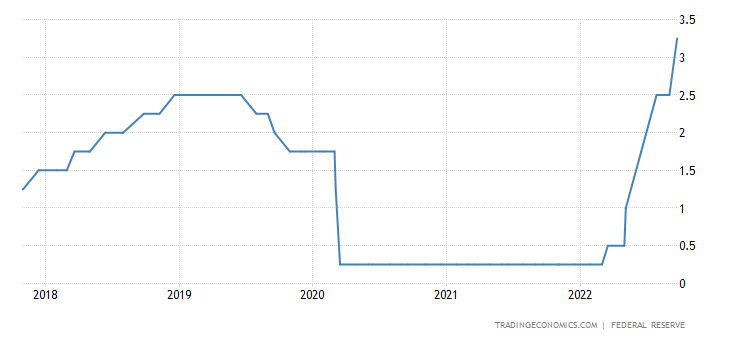
We can see clearly through this chart the start of the covid-19 pandemic in march of 2020 when the Fed dropped the interest rate to nearly 0% in the hope of supporting demand and escaping a possible recession.
The Fed succeeded in 2020 by supporting demand and evading a recession and interest stayed at the lowest they have been in decades for 1 full year.
After the economy reopened and inflation, a number of people started to consume as much as before the pandemic. The Fed swiftly changed course and began raising interest rates at a fast-paced to stop inflation but as we saw with August CPI(Consumer price index) coming at 8.3% this hasn't been a great success.
How did stocks and crypto react
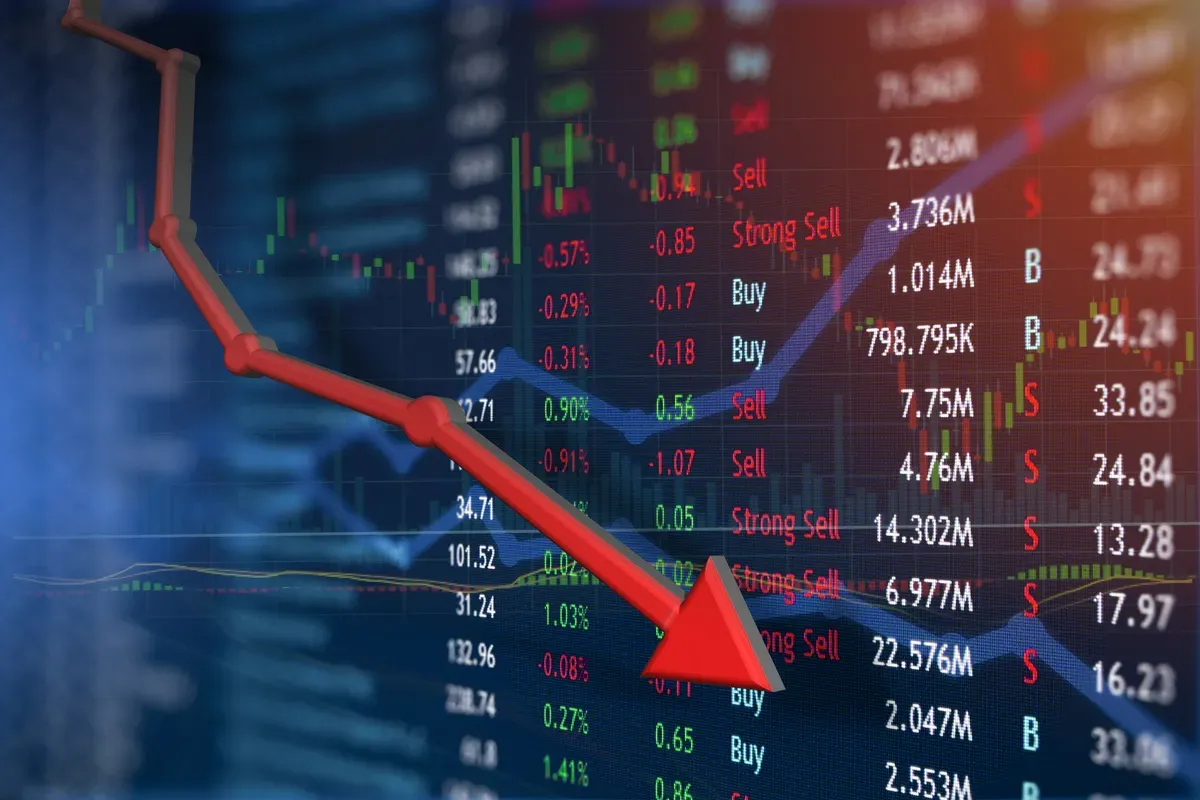
As we saw on Tuesday right after the FED announcement stocks and crypto dumped quickly Bitcoin literally lost $1000 in one minute.
This came even after the 0.75% rate hick was priced in, some traders were worried about a 1% rate hick. But throughout the meeting, Powell made very uncertain and scary claims about the future.
He said that people should prepare themself for a recession and that the housing market needs to crash before this whole crisis end.
He also added that for 2023 FED hick predictions are anywhere between 1% and 1.5% which of course isn't good for financial assets.
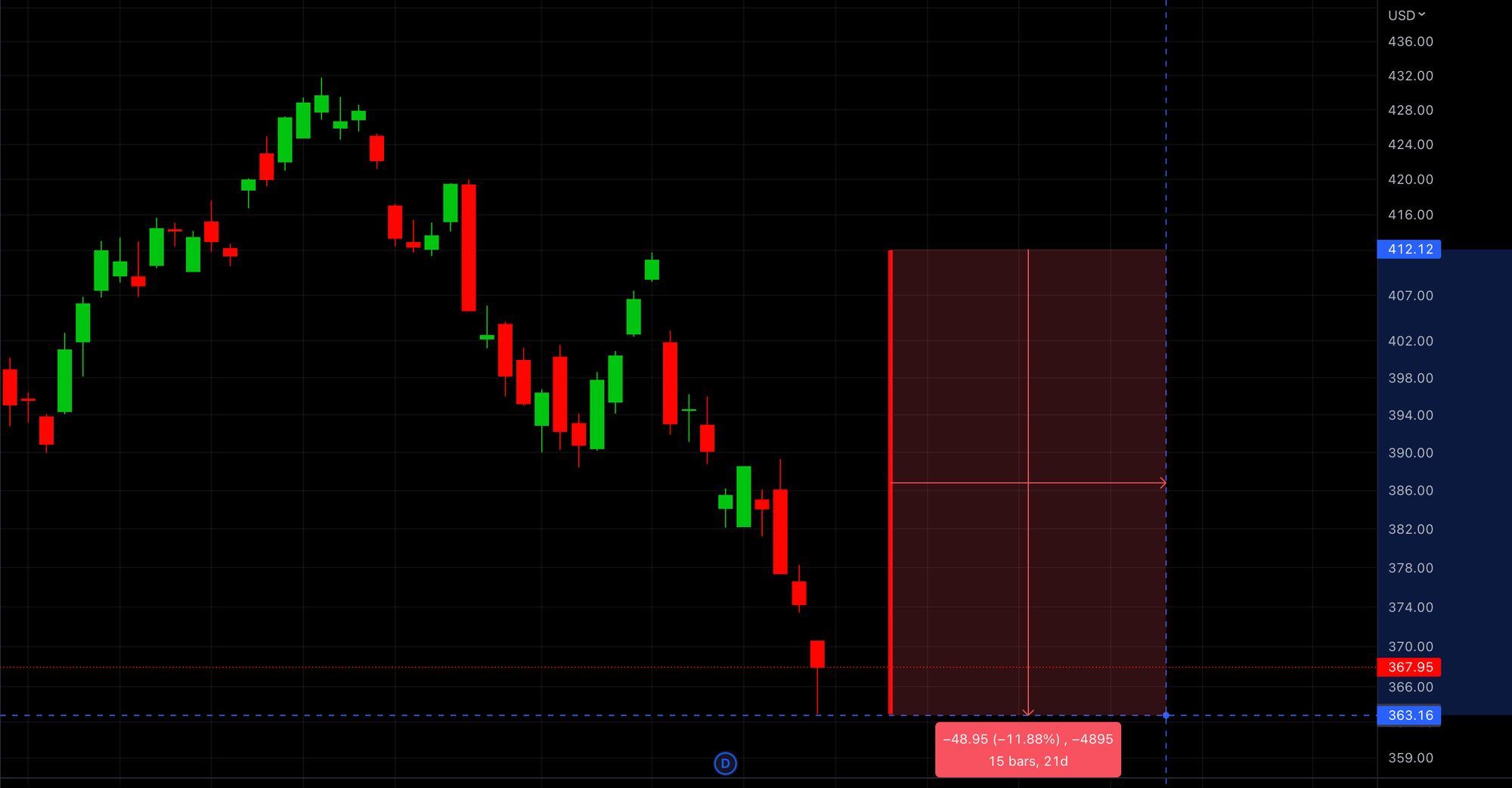
Since the start of the month, the S&P500 fell by nearly 12% which clearly shows a weakening in confidence in the economy as investors are seeing inflation, interest rates, and unemployment going up. In parallel, we saw earnings starting to go down, and with already two consecutive negative GDP quarters things don't look good.
What is also happening is that Companies and other investment funds have to sell their stocks to rebalance their balance sheets and adjust for losses they have undertaken in the previous months at the start of the bear market. This also creates heavy selling pressure.
What could this tell us about the Future?
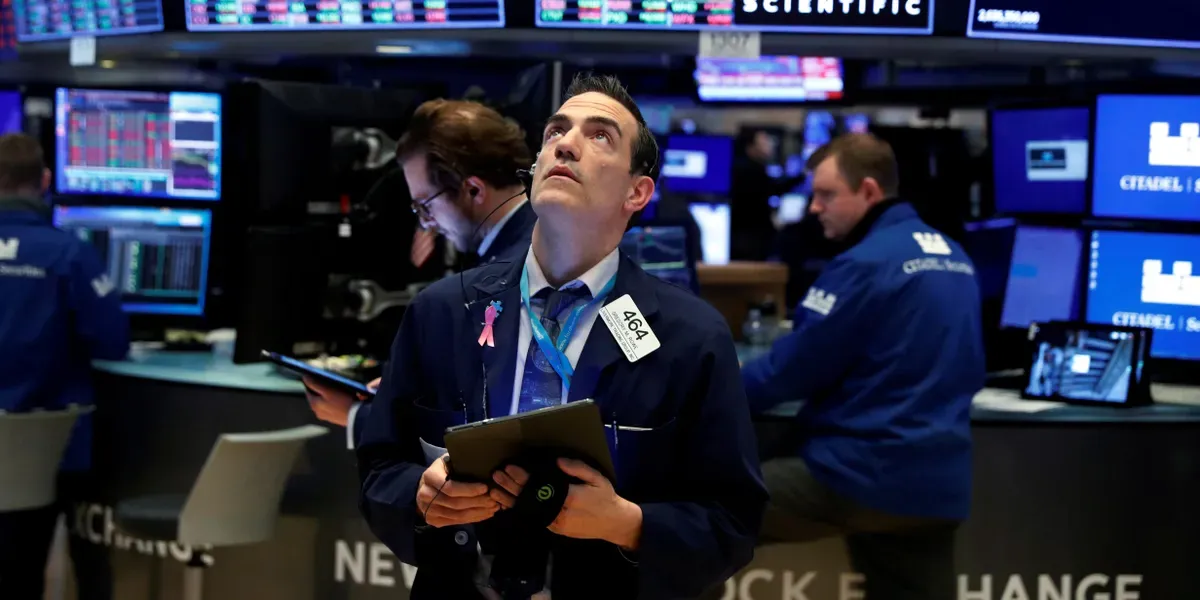
No one really knows for sure what would happen in the future but it's safe to assume that there is more trouble ahead.
The main problem today is inflation which is a result of very complex geopolitical and supply chain issues which are pretty much impossible to control just via monetary policies. The war in Ukraine and supply chain bottlenecks in China and other main exporters countries are way beyond the FED's ability to take action. Because of that inflation might stick around for a little longer which means higher interest rates and a slower economy and financial assets keep going down.
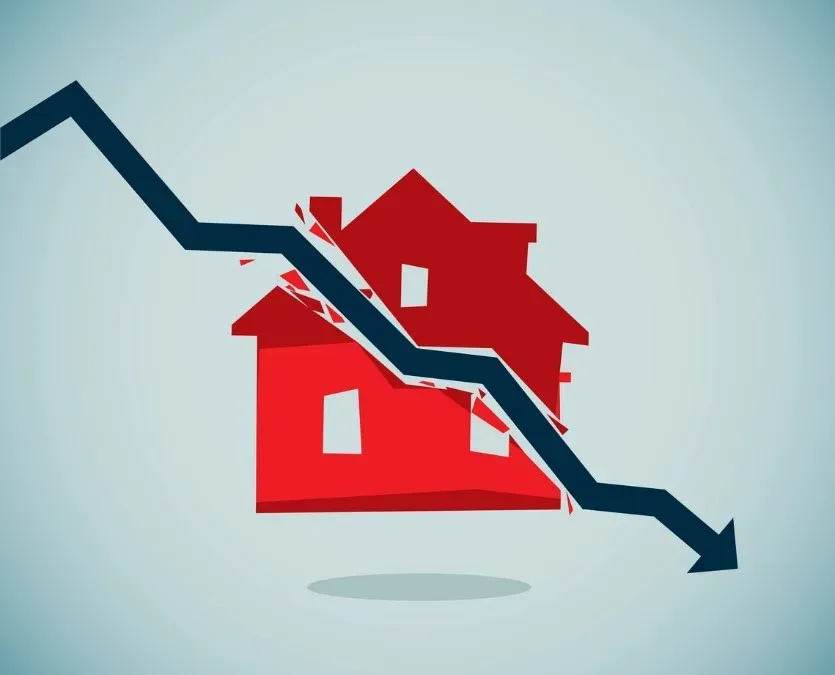
With Jerome Powell publicly announcing the potential crash of the housing market, investors might keep an eye on the sector that will be the most affected.
Can you guess it?
Yes! The banking sector because banks are the ones that have been financing most of the home purchases and at very low-interest rates in the past five to two years, in the event of the housing market and people defaulting on their loans this will means big trouble for banks. We saw that during this week banks and other related companies were the biggest losers with Bank of America and Credit Suisse losing respectively 10.5% and 21%.
If nothing really changes on the macro level we can expect the continuation of the current sequence of events. Which means even lower lows.
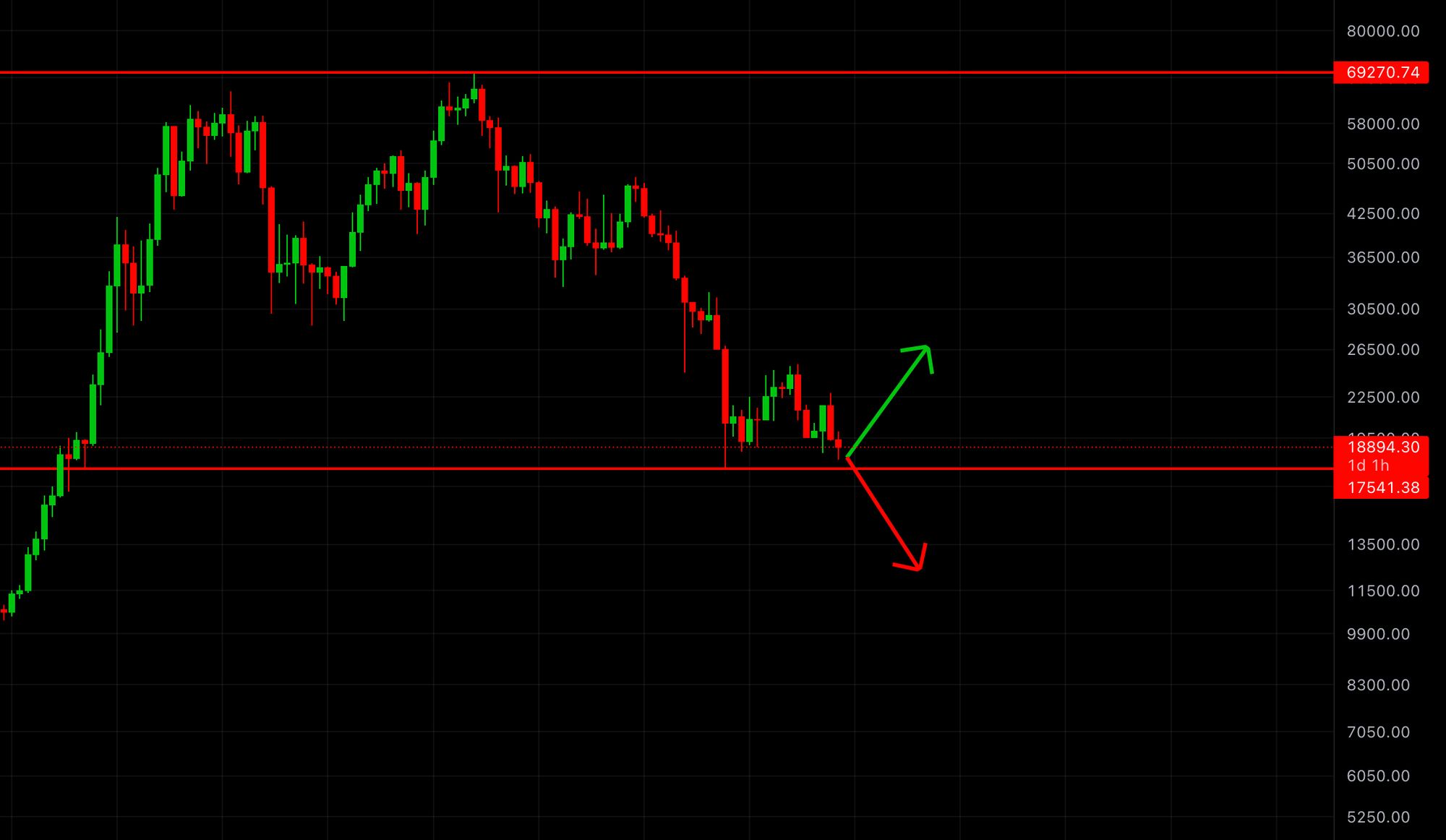
As for BTC/USD, we are still at a critical support level around $17500.
We don't have to speculate on the way the price is going to behave in the near future, all we have to do is react accordingly regarding new information we get from the Chart or from other macro implications.
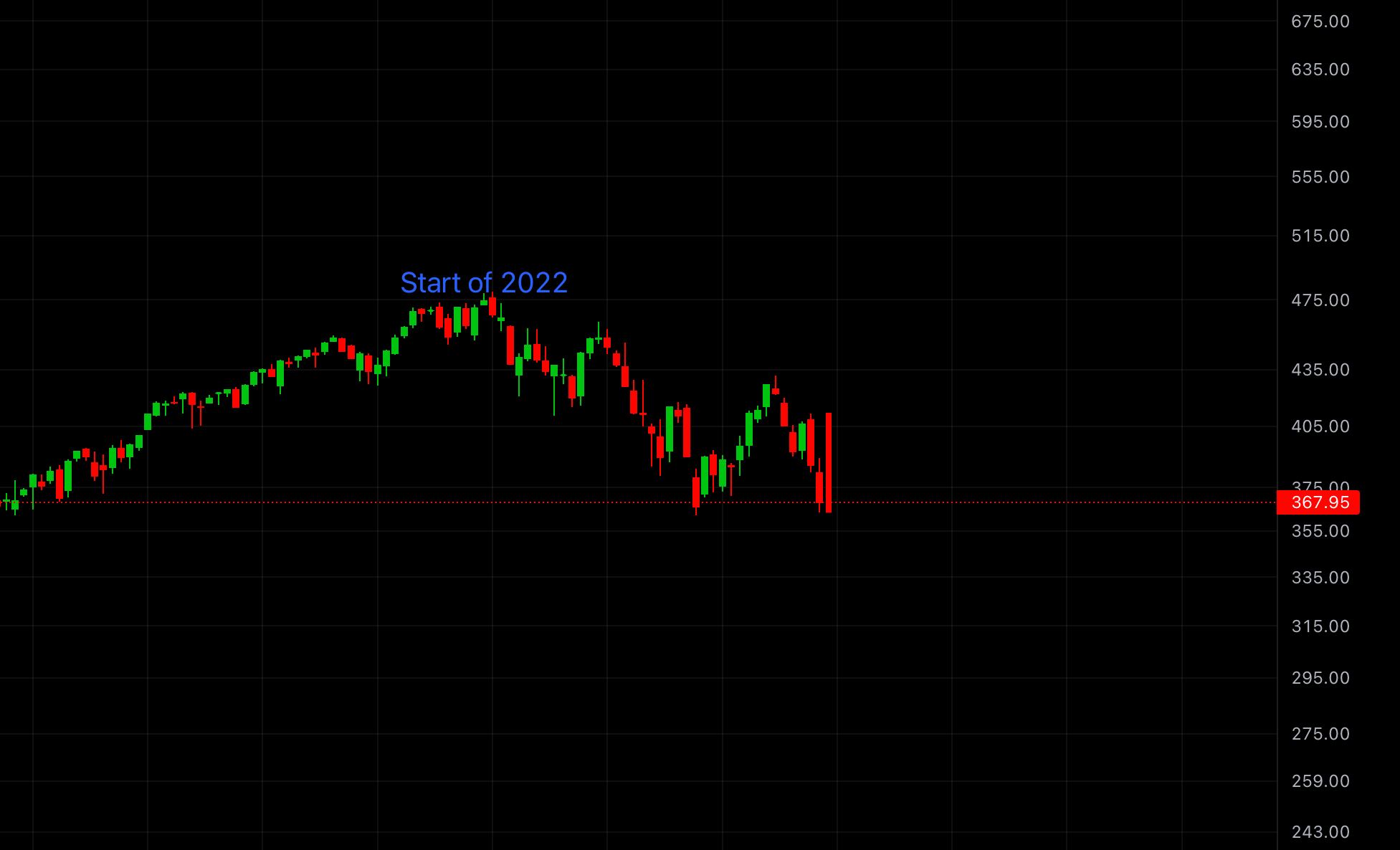
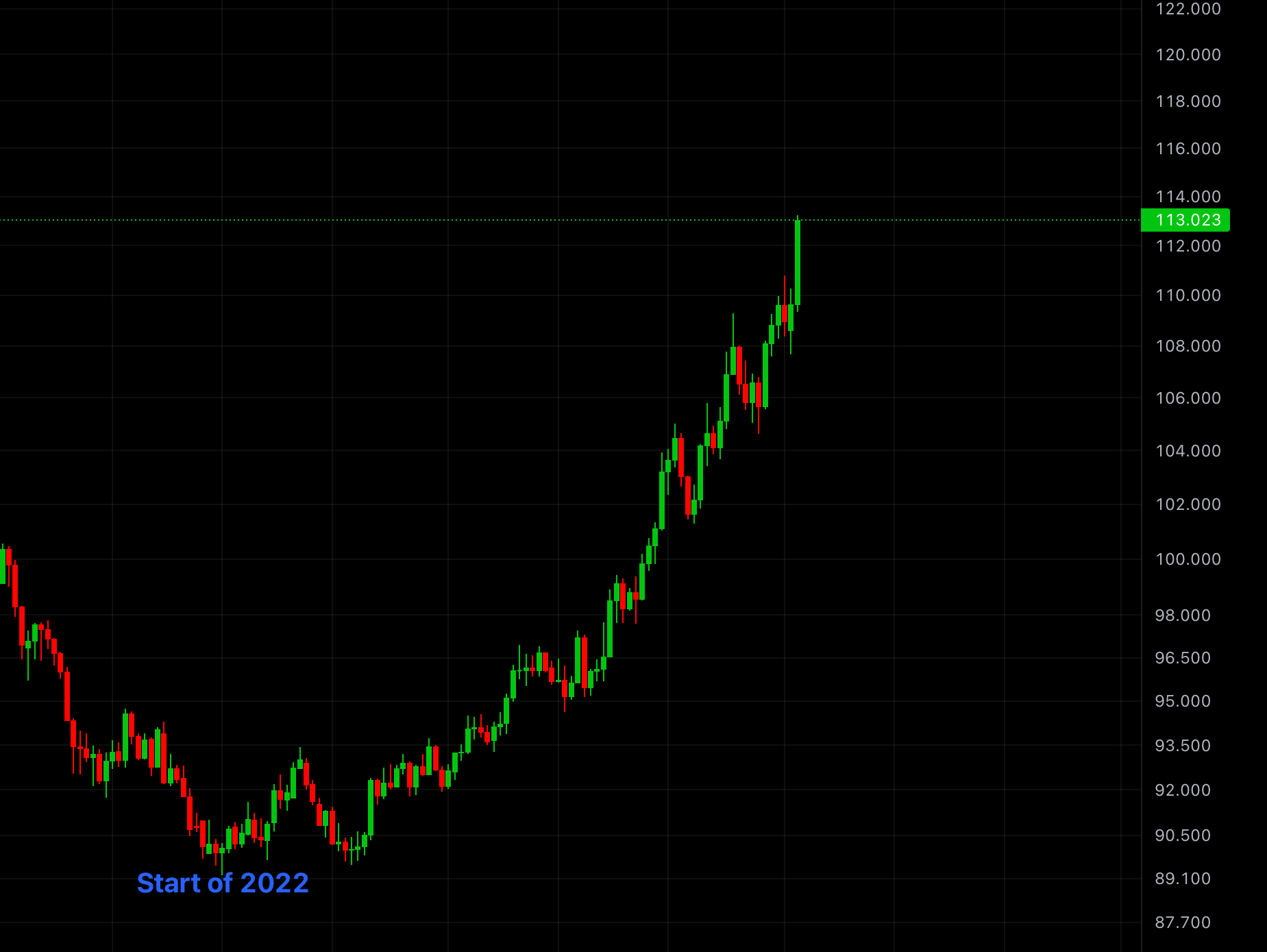
We can't really expect much price movement to the upside, especially with DXY still rallying through all-time highs.
We can see with those two charts above how the rally in DXY at the start of 2022 triggered the beginning of the bear market for crypto and stocks.
That's why investors should also be concerned about the DXY index to monitor a potential market reversal in the coming months.
Legal Disclaimer:
The Content is for informational purposes only, you should not construe any such information or other material as legal, tax, investment, financial, or other advice. Always do your own research.
INVESTMENT RISKS:
There are risks associated with investing in securities. Investing in stocks, bonds, crypto, exchange traded funds, mutual funds, and money market funds involve risk of loss. Loss of principal is possible. Some high-risk investments may use leverage, which will accentuate gains & losses. Foreign investing involves special risks, including a greater volatility and political, economic and currency risks and differences in accounting methods. A securities or a firm’s past investment performance is not a guarantee or predictor of future investment performance.
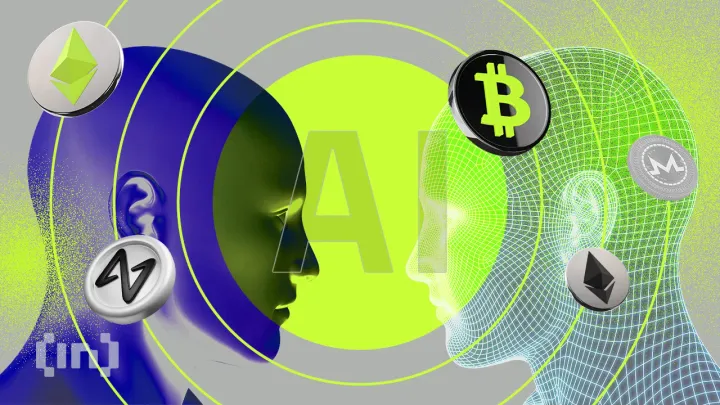

Comments ()